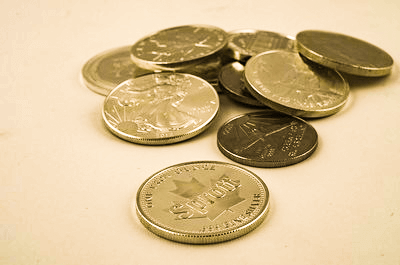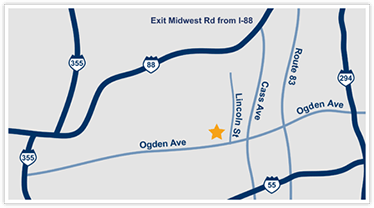What Is Silver Clad?
The coins in your pocket are more than likely “clad,” meaning they’re made out a few layers of different metals. However, it wasn’t always this way. From 1920 to 1964, U.S. coins were made from 90% silver. In 1964, the U.S. Mint decided that producing coins that were almost purely made of silver was no longer economically realistic and began producing clad coins, including some silver-clad coins. Learn more about the differences between silver, silver-clad, and clad coins to put a more accurate value on your collection.
What Does Silver Clad Mean?
Silver clad means that the coin has a metal core, usually copper, covered by a silver layer. The U.S. mint produced silver-clad Kennedy half dollars from 1965 to 1969 that are 40% silver. This is different from original silver coins produced before 1965, which boasted a 90% silver content. Many coin collectors seek silver-clad half dollars due to their rarity.
What Is the Difference Between Silver Clad and Clad?
Nearly all U.S. coins produced since 1970 are clad. Silver-colored coins, like dimes, nickels, and quarters, have a copper-nickel core with a nickel exterior. Pennies contain a mix of copper and zinc, while dollars contain copper, zinc, manganese, and brass. These coins don’t contain any silver, unlike silver-clad coins.
What Is the Difference Between Silver and Clad?
There are several differences between silver coins and clad coins, including:
- Sound: When dropped or knocked, silver and clad coins make different noises. Silver coins tend to make a higher pitched noise, while clad coins have a more dull sound when dropped.
- Appearance: Clad coins tend to turn more of a copper color as they age, whereas silver coins will become tarnished when exposed to the elements.
- Weight: Silver coins are much heavier than clad coins due to their high silver content.
- Edges: Pure silver coins do not have a different color on their edges, whereas clad coins have a noticeable copper-toned core on their edges known as a “third edge.”
How Can You Tell If a Coin Is Silver Clad?
The easiest way to tell if a coin is silver clad is to examine its edges. Silver-clad coins minted between 1965 and 1969 have a lighter silver stripe with traces of copper on the edges. This is because these specific coins are made from 40% silver.
Which Coins Are Silver Clad?

Other than the Kennedy half dollars, the U.S. Mint produced just a few other silver-clad coins. Silver-clad Eisenhower dollars were created in the early 1970s as part of mint sets. For the bicentennial, the U.S. Mint created silver-clad Eisenhower dollars, Kennedy half dollars, and Washington quarters with an “S” mintmark. These coins were only sold as mint or proof sets.
How Do You Sell Silver Coins?
There are several ways you can sell your pure silver coins. Once you have a solid idea of the worth of your coins, you can then look for places to sell them. Popular places that are good starting points when selling your silver coins include:
- A local coin shop or a coin dealer.
- Auctions.
- Forums.
- Coin shows.
- Pawnshops.
- Online marketplaces.
- Local smelters.
- Jewelry and coin buyers.
To ensure you receive the highest payment for your silver coins, you should get at least two offers from different collectors or locations. This allows you to compare offers and choose the best one.
How Much Are Silver Coins Worth?
Before trying to sell your coins, you should first ensure you know how much each coin is worth. Silver dimes are worth $1.22, and silver quarters are worth $3.07. However, older and more rare coins can be worth much more than this. The following are steps you can take to determine how much your coin collection is truly worth:
Separate your coins
You should begin by separating your bullion coins from your collectible coins. Collectible coins are those with rare dates and/or unique mintmarks or that are in excellent condition. Bullion coins are more common and less noteworthy but still have value due to their precious metal content.
U.S. silver coins dated before 1916 are often considered collectible if they are in good condition. Coins dated between 1916 and 1940 are often a combination of both rare and common mintmarks. Coins that are typically considered common and not of collectible value are Franklin halves, Roosevelt dimes, and Washington quarters.
Determine the value of your coins
After separating your coins into collectible and common categories, you should then research your coins’ worth using up-to-date coin resources. It’s important to note that if you intend to sell your silver coins to a coin dealer, they will typically offer you wholesale prices rather than the prices found in popular coin price resource guides.
Other factors that can influence the value of your coins include demand, condition, and rarity. If a silver coin is more popular among collectors, it will likely be valued higher even if it’s not that rare. Additionally, a coin’s condition can significantly impact its value. Mint-condition coins are usually worth more than chipped or scratched coins. Rare silver coins often have a higher value than more common silver coins. Uncirculated coins produced for proof or mint collections are rare and usually in mint condition.
After you estimate the value of your collectible silver coins, you should also determine how much the remainder of your silver coin collection is worth. You can do this by using an online silver coin value calculator. Simply select the U.S. coin you want to evaluate and the quantity of the coins you have in your collection, and the calculator will give you an estimate of how much that particular coin is worth.
While this process is time-consuming, it will ultimately ensure you get the full value of your silver coin collection when selling it.
Contact Americash Jewelry & Coin Buyers
If you’re interested in learning more about silver-clad coins or you have a silver coin collection to sell, stop by Americash Jewelry & Coin today. We’d be happy to value your coins and offer you a fair price. Contact us to learn more or schedule your appraisal.
Tags: coins, metal detector, silver clad coins



